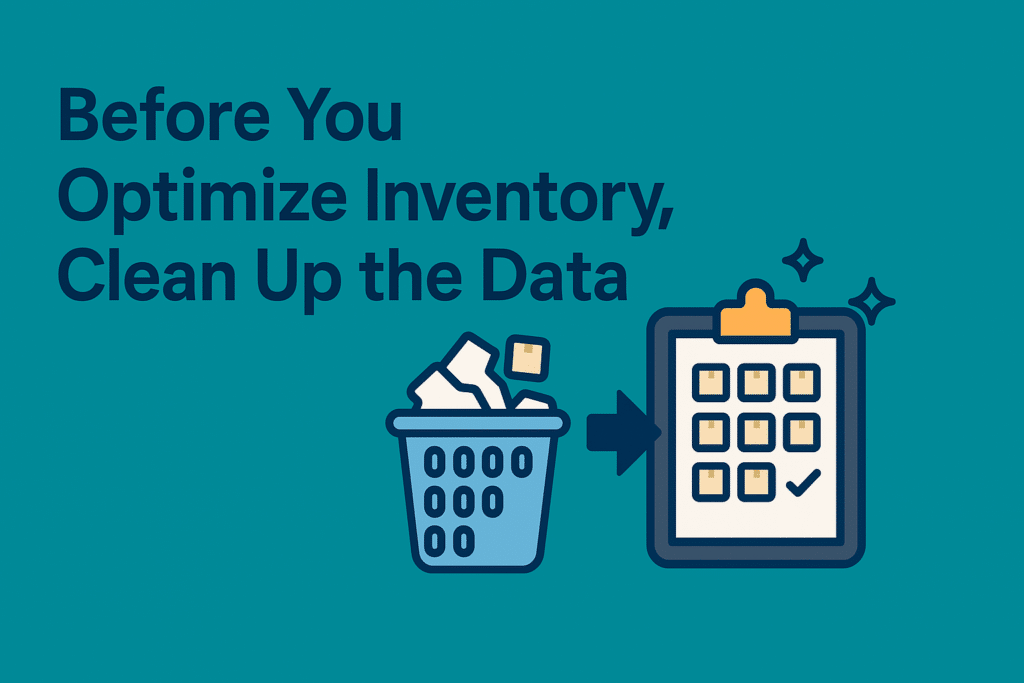Inventory Management Starts with Data Management
Imagine trying to fulfill an online order from a nearby store – only to discover the item isn’t actually in stock. This kind of disconnect is more common than most retailers would like to admit, and it usually comes down to one thing: bad data. Without clean, reliable inventory data, even the most sophisticated systems can’t make smart decisions.
You can’t optimize inventory if your data isn’t clean. Full stop.
Data Hygiene Isn’t Optional – It’s the Foundation
Clean data isn’t just a backend concern – it directly impacts customer experience, operational efficiency, and profitability. When inventory records don’t reflect reality, retailers face stockouts, overstock, fulfillment errors, and increased labor costs. And the problem compounds quickly.
A helpful mindset shift? Think of data cleaning like doing laundry. If you only do it once a month, it piles up. It becomes overwhelming, messy, and time-consuming to sort through. But if you do a little each day, it stays manageable and under control. The same goes for your data.
Make It Continuous, Not Cyclical
The most effective way to manage inventory data is in small, consistent batches. Cleaning and validating data continuously – rather than tackling it with large, infrequent cleanup projects – keeps your systems aligned with what’s actually happening on the ground. It’s far easier to maintain clean data than to fix a mess later.
For many retailers, RFID is often seen as the go-to fix for improving inventory accuracy. While it can significantly enhance visibility, it’s not always the right first step. In many cases, there are more basic, cost-effective actions that should come first.
Start With the Gaps You Can See
The first step is identifying where inconsistencies exist in your current data. A few practical examples:
- Discrepancies between “in transit” status and store-level inventory
- SKUs marked as “active” with no physical stock or sales movement
- Negative inventory counts, often caused by missed receipts, duplicate transactions, or system delays
Each of these is a red flag – clear indicators of broken or misaligned processes that can be addressed without major system overhauls.
Build Simple Daily Validations
Once you know where the gaps are, define a core set of 15–20 validation rules tailored to your operational model. These checks should run daily to automatically flag anomalies. The key is to create a process where operations, supply chain, and planning teams collaborate to resolve issues as they arise – not just when they become major problems.
Addressing data inconsistencies consistently and collaboratively lays the groundwork for long-term inventory optimization – and positions the business to move faster, respond smarter, and serve customers better.
About the Author
Onebeat co-founder and CEO, Yishai Ashlag, is an economist, author, and globally recognized authority in Theory of Constraints (TOC) methodology. A former partner and founding member of Goldratt Group and post-doctoral fellow at the Wharton School of Business, Ashlag brings academic acumen and decades of experience in management consulting to leading operational excellence and sustainable growth through innovation for Onebeat and retail at large. Ashlag holds a Ph.D. in Economics from Bar Ilan University and is the author of acclaimed fiction and non-fiction titles on the topic of managing uncertainty, TOC, and more.
